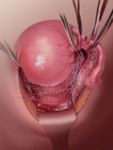Grand Rounds: Practical perspective on cesarean hysterectomy: When, why, and how
Cesarean hysterectomy and postpartum hysterectomy are commonly performed emergently for severe uterine hemorrhage that is unresponsive to conservative therapies. These procedures differ in timing. Cesarean hysterectomy is performed immediately after a cesarean delivery for severe hemorrhage or, less commonly, as a planned procedure to treat preexisting gynecologic disease. Postpartum hysterectomy is performed after a vaginal delivery for delayed hemorrhage or infectious complications.

Key Points

Various studies have reported the incidence of peripartum hysterectomy as 0.04% to 0.23% of deliveries.1-3 Studies concerning the overall incidence of peripartum hysterectomy and trends are conflicting, depending on the populations and time periods studied. In a population-based, case-control study using Washington State birth certificate registry data, Bodelon et al found that the incidence is increasing.4 In this review of 896 hysterectomies performed between 1987 and 2006, the incidence rates significantly increased from 0.25 per 1,000 deliveries in 1987 to 0.82 in 2006.
Hysterectomy performed as a result of peripartum complications is associated with significant morbidity and mortality,3 as well as excess healthcare expenditures related to prolonged hospitalization, need for care in an intensive care unit, use of blood products, and the potential for additional surgical procedures. In addition, and especially when unanticipated, it can lead to significant patient emotional stress and potential lawsuits.
Regardless of the underlying cause, paramount to optimizing outcome is a methodic and focused approach to the diagnosis and rapid application and evaluation of available treatment modalities. Surgeons encountering severe peripartum hemorrhage need to decisively apply conservative measures as appropriate to the clinical situation. These will generally include uterotonics, uterine tamponade (eg, intrauterine balloon), ligation of bleeding sites, uterine artery ligation, placement of B-lynch sutures, and transarterial embolization, if available and when patient status permits. Activated recombinant factor VII also has recently emerged as a treatment for postpartum hemorrhage.6
